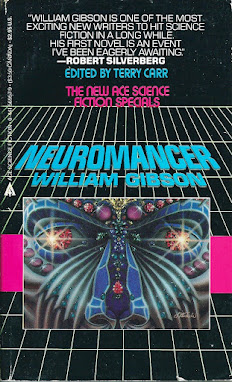Book Review: 'Assassin's Dawn' Trilogy
Slow Fall to Dawn
Dance of the Hag
A Quiet of Stone
by Stephen Leigh
'Assassin's Dawn' (610 pp.) was published by DAW Books in May 2013. It's an omnibus of the novels in the so-called 'Hoorka' trilogy, all originally issued by Bantam Books: 'Slow Fall to Dawn' (1981), 'Dance of the Hag' (1983), and 'A Quiet of Stone' (1984). With those original paperbacks long out of print, this omnibus edition is a good way to acquire the trilogy for an affordable price.
The omnibus edition features an Introduction written by author Leigh, in which he remarks that he used the historical hashashin cult of assassins, who operated in the Middle East from 1090 to 1256 AD, as an inspiration for his novels.
The trilogy is set on the planet Neweden, which, despite its salutary name, has been an impoverished galactic backwater for some time. The isolation has given rise to a number of strange religious cults and beliefs, some centered on the worship of Dame Hag, who governs death, and She of the Five Hands, who governs fate. A fatalistic attitude towards life and death pervades the collective psyche of Neweden's people, rendering them comfortable with the entropy that has stricken the planet
Guilds, rather than political parties, rule Neweden, with inter-guild disputes settled by formal feuds rather than warfare. Key to the settling of feuds is the guild of assassins, known as the Hoorka, who are led by the middle-aged master assassin Gyll Hermond. The rules governing assassination contracts are formalized and scrupulously followed, and thus allow a slim chance for the pursued to survive.........if he or she can evade death until sunrise.
As the creator of the Hoorka, Gyll Hermond is not content to see the guild leverage its influence among the perpetually disputatious guilds of Neweden. He has wider ambitions, ones that can be fulfilled by the spaceport at the capital city of Sterka. After centuries of isolation, the resurgent Galactic Alliance has opened a trade and diplomacy mission at the port, and the mission's Regent, Madame D'Embry, may prove sympathetic to allowing the Hoorka to accept commissions on member planets. To Hermond, the prospect of opening satellite offices throughout the Alliance is a means of freeing the Hoorka from any dependency on the ever-shifting political landscape of Neweden.
But unyolking the Hoorka from their dependency will not be easy:
Vingi, the corpulent and odious ruler of Neweden, intends to control the assassin's guild for his own purposes.......howevermuch those purposes may bring social and economic chaos to the streets of Sterka.........
Kaethe, the representative of the powerful FitzEvard intergalactic trading company, offers an alternative route to expansion, one free from Alliance strictures.......but FitzEvard has no scruples about working at cross-purposes with its unwitting partners.......
And some among the Hoorka, including Hermond's possible successors Aldhelm and Valdisa, are skeptical of his plans to expand operations to the worlds of the Alliance. A divide among its members could bring an abrupt end to all of Hermond's ambitions.......
The Hoorka Trilogy nestles comfortably into the sub-genre of sci-fi, popular in the late 70s and early 80s, that offered highly detailed and complex portraits of 'alien' societies (examples are 'The Gameplayers of Zan' by M. A. Foster, 'Courtship Rite' by Donald Kingsbury, 'The Snow Queen' by Joan Vinge, and 'Door into Ocean' by Joan Slonczewski).
The opening chapters of 'Slow Fall to Dawn' can require patience, as the prose is saturated with metaphors, similes, and densely descriptive passages. But if the reader perseveres, the plot begins to gain momentum, and by the novel's end I found 'Slow Fall' to have sufficient action to make the sequels worth pursuing.
These have a more expansive approach to plotting, with crisp sequences set off-world in which the Hoorka take on assignments that take them well outside the familiar surroundings of Neweden. The introduction of a new character, the dwarf Helgin, brings a note of dark humor to the narrative, as his cynical, world-weary observations about interplanetary politics serve as a foil to the ambitions of Gyll Hermond.
The concluding chapters of 'A Quiet of Stone' offer a tense battle of wits and combat skills, and thus, the end of the trilogy avoids advancing too pat an ending.
Summing up, readers who are willing to sit down with a densely written, character-driven set of novels likely will enjoy 'Assassin's Dawn'. This trilogy stands well alongside other well-received (by me, at least) 1980s trilogies, such as Harry Harrison's 'Eden' series, and Melissa Scott's 'Silence Leigh' series.










































.jpg)

















